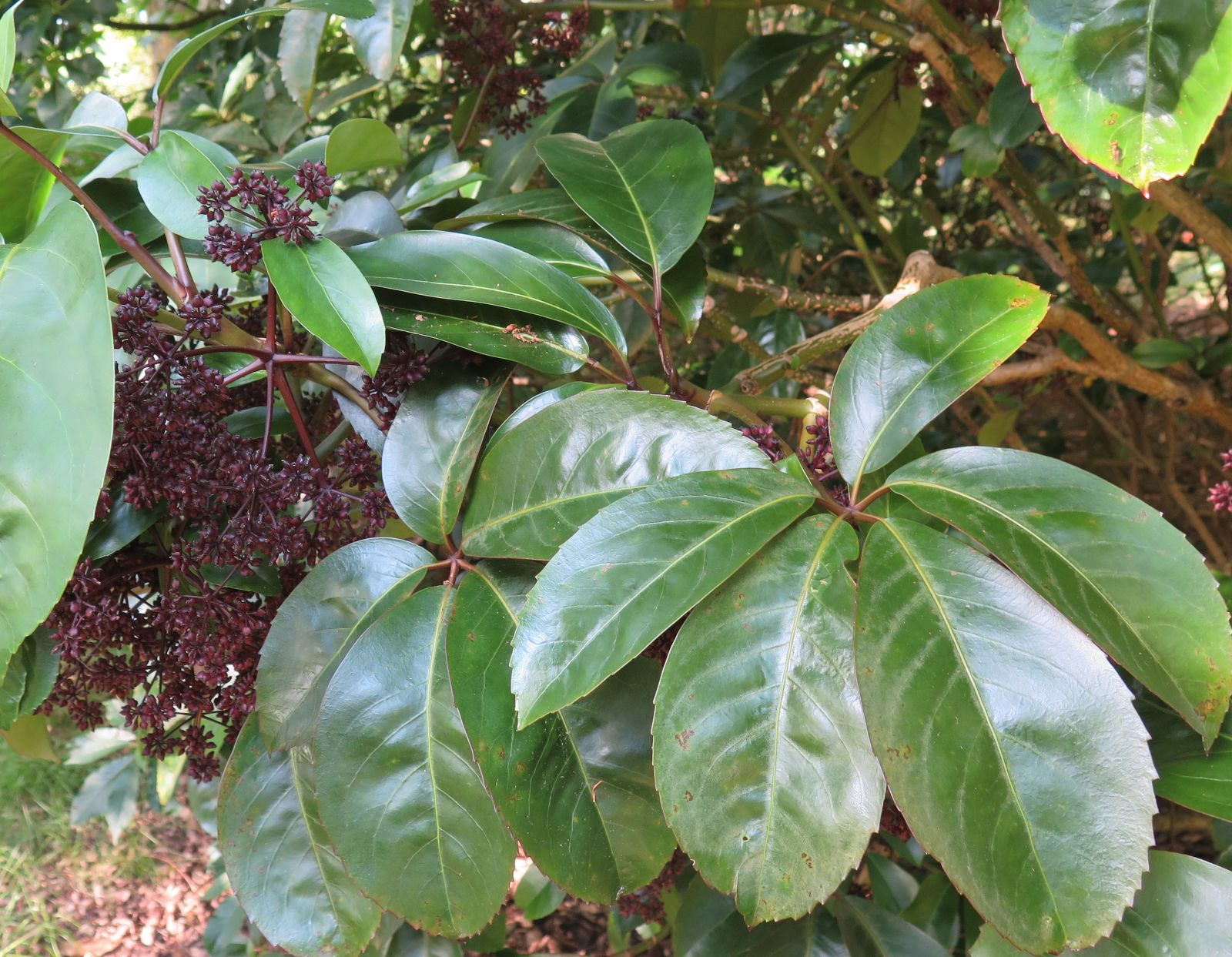Neopanax laetus
Credits
John Grimshaw and Ross Bayton (2009)
Recommended citation
Grimshaw, J., Bayton, R. (2009), 'Neopanax laetus' from the website Trees and Shrubs Online (treesandshrubsonline.
Genus
Synonyms
- Panax arboreus var. laetus Kirk
- Nothopanax laetus (Kirk) Cheesem.
- Pseudopanax laetus (Kirk) Philipson
Large shrub or small tree to over 5 m tall; the crown much branched and rounded. Leaves evergreen, very large, digitate, petiole purplish-red and sheathing the stem, to 25 cm long; leaflets five to seven, 10–14 × 5–7 cm, narrow, ovate to oblong, green, though paler below, glossy, thick and leathery, margins coarsely dentate to serrate, midribs and lateral veins prominent, apex acuminate to acute; petiolules 0.8–2.2 cm long. Dioecious. Inflorescences terminal and compound, without a distinct primary axis, umbellate; primary branches 4–15, with 9–20 umbels; umbels with 13–36 flowers each. Flowers small, 0.3 cm wide in bud, brown. Fruit ribbed, 0.5 cm diameter, slightly compressed; two distinct apical stigmatic branches. (Cheeseman 1923, Allan 1961)
Distribution New Zealand North Is. (Coromandel Peninsula to Taranaki).
Habitat Lowland forest.
USDA Hardiness Zone 9-10
RHS Hardiness Rating H2
Neopanax laetus is a truly magnificent shrubby tree, with huge glossy leaves. Unfortunately it is rather tender, with even catalogues suggesting that mature, established specimens can tolerate only –5 °C (for example, Trevena Cross Nurseries catalogue 2003). Despite this it is worth attempting, in appropriately mild, sheltered gardens, possibly having grown it under glass for some time before planting it out. The recordin the British Isles is a 7.5 m specimen recorded at Castlewellan in Co. Down in 2004. Alternatively, it can be enjoyed as a very handsome pot or conservatory plant.

